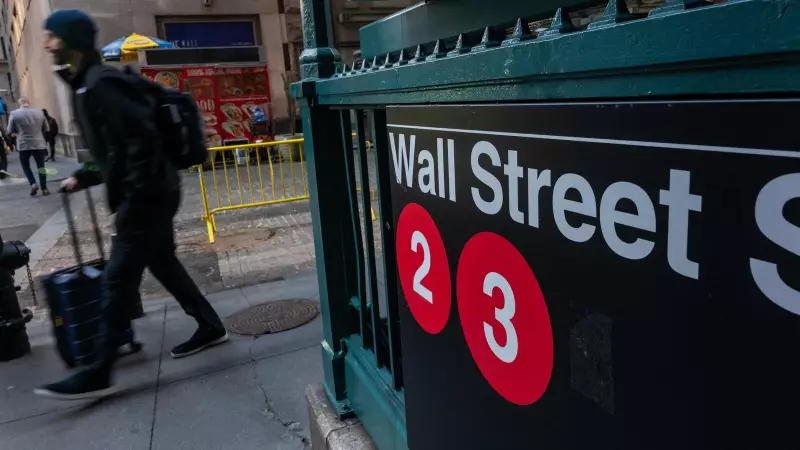
The spectacular rally in artificial intelligence stocks that powered Wall Street to dizzying heights has dramatically lost steam, putting the benchmark S&P 500 index on track for its most dismal November performance in 17 years. A wave of selling has gripped technology shares, particularly in the AI sector, as investors grow increasingly skeptical about the sustainability of the sky-high valuations.
Major Tech Stocks and Indices Take a Beating
So far in November, the S&P 500 has plummeted 4.4%. If this negative trend continues until the month's end, it will mark the index's worst November since 2008, when it crashed by 7.48%. The tech-heavy Nasdaq has suffered an even steeper decline, falling sharply by 7%, while the Dow Jones Industrial Average has also sunk by 4%. This broad weakness signals the worst week for the three main US indexes since April, a period roiled by former President Trump's tariff war.
The sell-off has hit former market darlings the hardest. Nvidia Corp, the world's most valuable company and a bellwether for the AI industry, has seen its stock price fall 11% in November. This puts it on course for its most significant monthly drop since March 2025, a stark contrast to its better-than-expected Q3 results and upbeat guidance. Despite this recent slump, Nvidia's stock remains up a substantial 34.51% for the year, and it recently achieved the historic milestone of a $5 trillion market capitalization.
The pain has spread across the chip-making sector. Shares of Advanced Micro Devices (AMD) have fallen 20% this month, and software giant Oracle has tumbled by 23.30%.
Global Markets Echo US AI Sell-Off
The retreat from AI and related stocks is not confined to Wall Street. The contagion has spread rapidly across global markets, weighing heavily on major indices in Asia. Key global chip stocks like TSMC and ASML have declined sharply from their recent peaks. Japanese investment giant SoftBank Group, which has extensive holdings across AI infrastructure, semiconductors, and application companies, has fallen a staggering 36% from its recent highs. Benchmarks in economic powerhouses like China, Japan, and South Korea have all lost more than 2% in the current month, confirming the worldwide nature of the tech-driven downturn.
Fears of a Dot-Com Style AI Bubble Intensify
The rapid ascent and subsequent fall of AI stock prices have drawn unsettling comparisons to the dot-com bubble of the late 1990s. During that era, exuberance over a new technology—the internet—drove valuations to unsustainable levels before the bubble catastrophically burst in early 2000, wiping out companies and decimating savings and pension funds.
Top financial leaders are now raising alarm bells. Goldman Sachs CEO David Solomon has warned of a “likely” 10–20% drawdown in equity markets within the next two years. The International Monetary Fund and the Bank of England have also expressed concern. Bank of England Governor Andrew Bailey specifically highlighted the possibility of an AI bubble, noting that the sector's positive productivity potential could be undermined by uncertainty around future earnings. Similarly, JPMorgan CEO Jamie Dimon said he is “far more worried than others” about a serious market correction that could occur within the next six months to two years.
Fed Rate Cut Hopes Fade, Adding to Pressure
Compounding the sector-specific fears are shifting macroeconomic expectations. Investor hopes for an interest rate cut from the US Federal Reserve in December have dimmed significantly. A delayed nonfarm payrolls report showed that nonfarm payrolls increased by 119,000 in September—more than double the estimated 50,000—while the unemployment rate rose to 4.4%, the highest in four years.
Following this data, fed funds futures indicated less than a 40% chance of a third rate cut this year. Fed Governor Michael Barr reinforced this cautious stance, noting that the central bank must proceed carefully with additional cuts as inflation remains stubbornly above target. The minutes from the Fed’s October meeting revealed that policymakers cut rates even as they warned that further easing could risk entrenching inflation and undermining public trust, adding another layer of uncertainty to the market mood.





